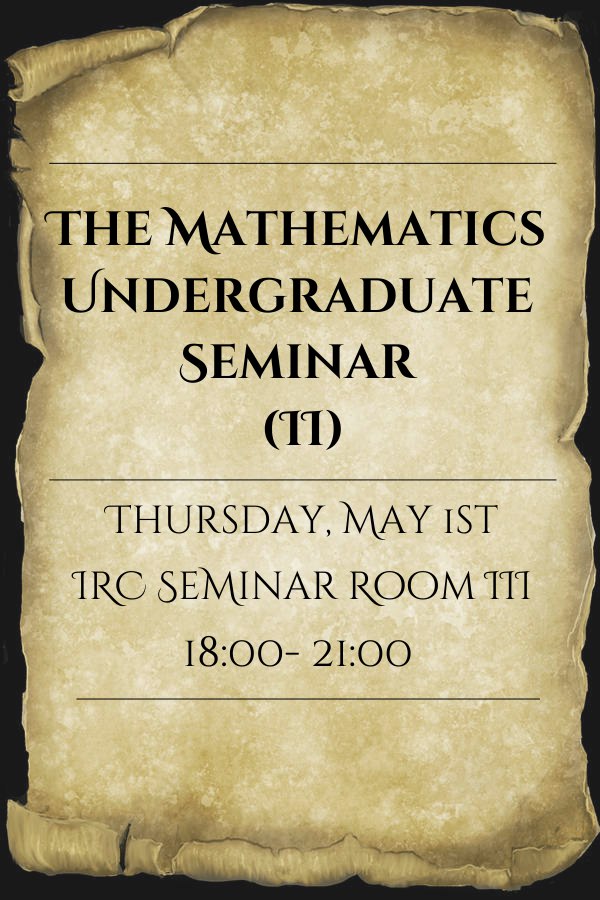the mathematics undergraduate seminar (ii)
may 1st, 2025
livestream
Here you may follow the talks in real-time.
> to seminar room
abstracts
Shortly before the first talk, we commence with an introductory talk on the history and methodology of this seminar concept.
| Talk | Abstract | |
|---|---|---|
| Mathematics of Protein Structure Determination 18:30—19:05 by Loredana-Maria Iacob | Scientists lacked a clear understanding of how waves interact with atoms and crystals. Analysing diffraction peaks determines the spacing between atomic planes and, consequently, the crystal's structure. The father and son team of William Henry Bragg, and William Lawrence Bragg were the first to correctly analyse the diffraction peaks pattern. In this talk, we introduce Bragg's law in the context of X-ray Crystallography. We outline the protein structure determination by crystallization, Fourier analysis on diffraction intensities, and finally solving the electron density map. Even in a field where mathematics is assumably absent, this talk illustrates the power of mathematical construction and its unforseen applicability to complex systems and real-world phenomena. | |
| On the Problem of Reliable Communication: Shannon's Theorem and Polar Codes 19:30—20:05 by Aly Assaf | Coding Theory is responsible for facilitating reliable message-passing over communication channels. In 1948, Claude Shannon proved that for every channel, there exists a family of error-correcting codes that allow reliable communication at any rate below the channel's capacity. Shannon's work is, however, non-constructive, as it provides no method to design such efficient codes. While there have been attempts over the years to reach this theoretical capacity, notably with LDPC codes (1990) and Turbo Codes (1993), these could only empirically approach the theoretical limit, and only under certain circumstances would they reach Shannon's maximum capacity. This stood for 60 years until Erdal Arikan's introduction of Polar Codes, the first clean and mathematically proven family of codes to achieve Shannon's maximum capacity over symmetric binary-input memoryless channels. This talk aims to briefly introduce the general Coding Theory scheme, as well as outline the key ideas in Shannon's arguments. As the first constructive example, we introduce the outstanding work of Arikan, and explore the construction behind polar codes. One concludes with ending remarks on why the discovery of polar codes presents a strong candidate for future 6G communication. | |
| The Legend of Question Six 20:10—20:45 by Vano Kakiashvili | The Legend of Problem 6 goes back to the 1988 International Mathematics Olympiad for high school students. The problem is so challenging, that, four brilliant number theorists could not solve it in six hours. Behind this problem lies a powerful and elegant technique known by Vieta Jumping, used to tackle Diophantine equations. Rooted in classical algebra via Vieta’s formulas, the method transforms complex integer equations into opportunities for clever manipulation and descent. Our goal is to explore the underlying ideas of Vieta Jumping, its strategic use in proofs by contradiction, and its role in unlocking unexpected symmetries. With Problem 6 in mind, we shall offer a step-by-step breakdown of the “jumping” process, demystifying the technique and highlighting its beauty and utility in mathematical problem-solving. Whether you’re an expert competitor or just curious about this very difficult problem, this talk aims to offer both insight and inspiration. | |
poster
